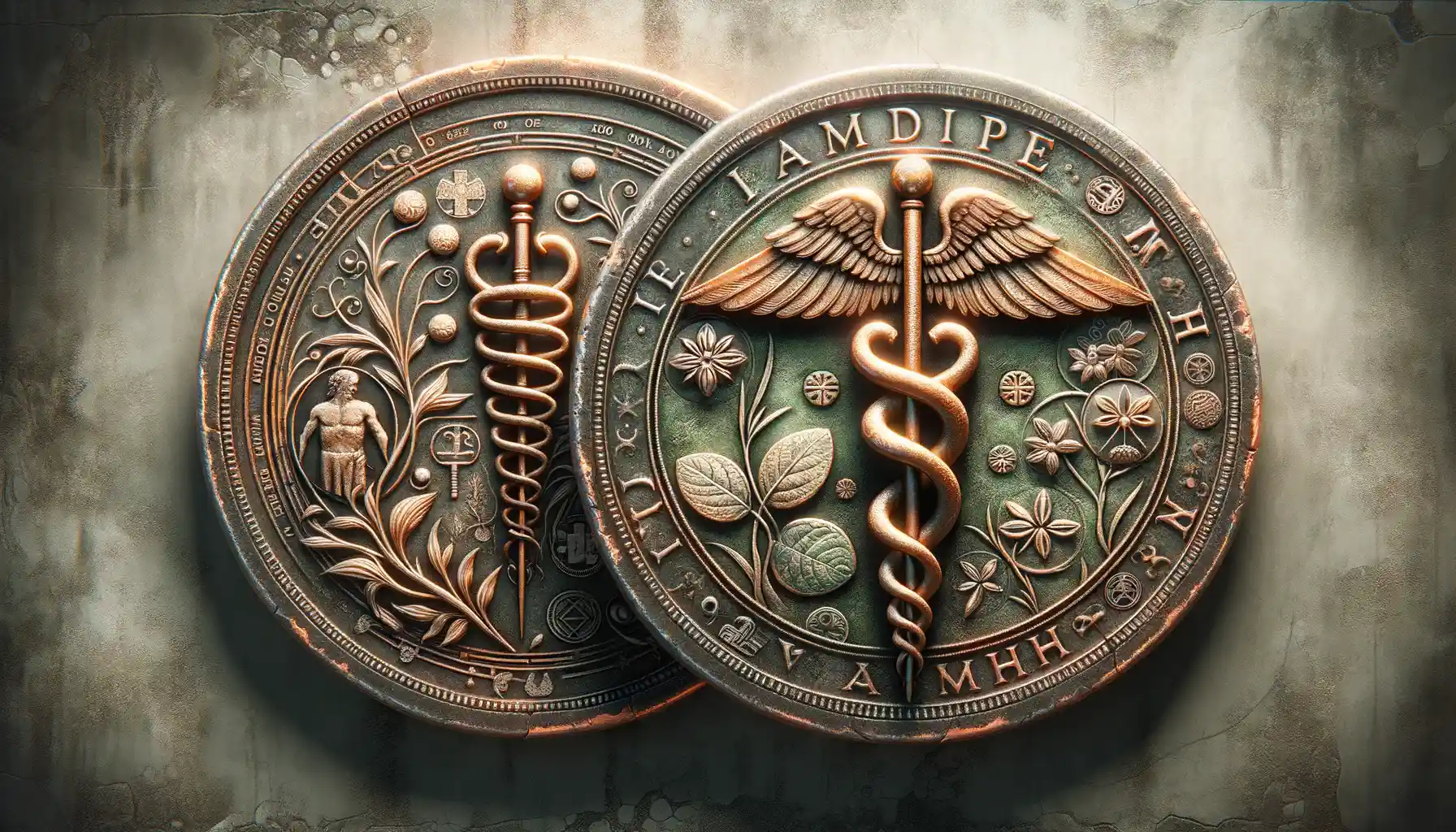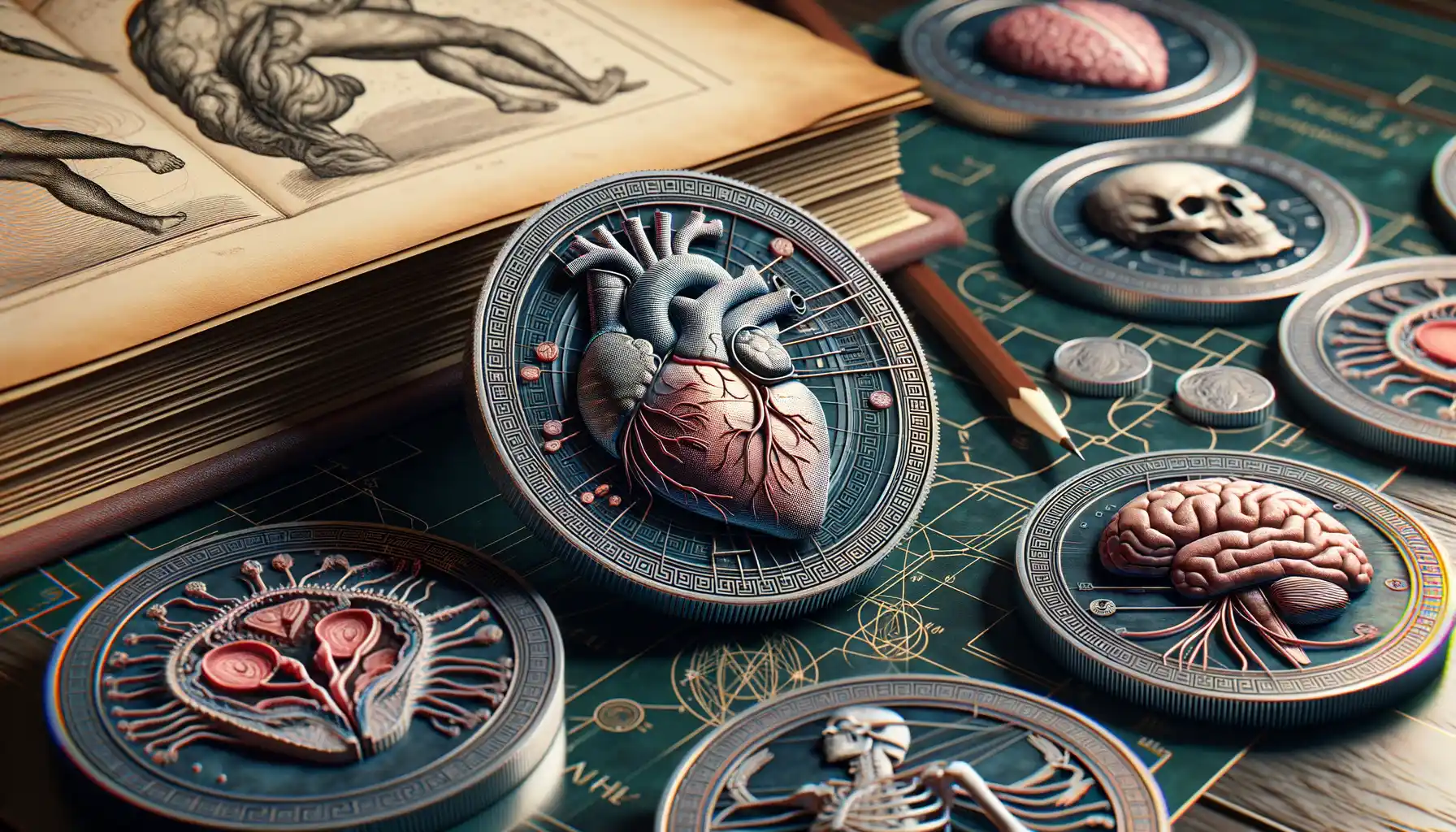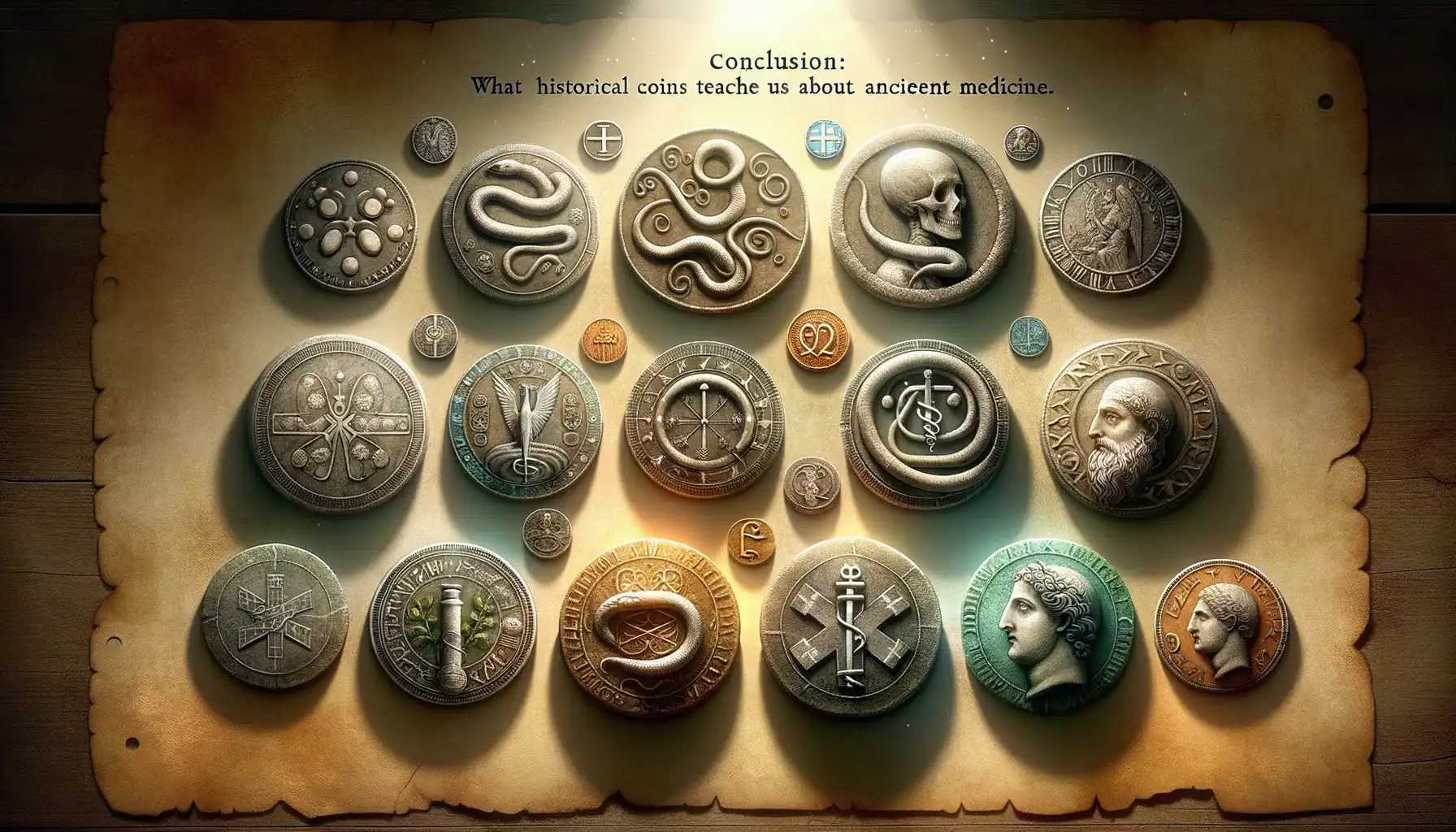Introduction to the Link Between Coins and Ancient Medicine
Imagine holding a small, ancient coin in your hand—a seemingly ordinary piece of metal. But let’s pause for a moment and look closer. That coin might be whispering secrets from a distant past, about how humans once understood health and healing. You wouldn’t expect it, but coins and ancient medicine share a surprising and profound connection, one forged in the crucible of history. Through their symbols, designs, and even the materials they were made from, these coins tell stories that textbooks sometimes forget.
The Silent Language of Symbols
Ancient coins often bore images that connected directly to the healing arts. Think of a Roman denarius portraying Aesculapius, the god of medicine, his serpent-entwined staff unmistakable. Or consider Greek drachmae inscribed with symbols like laurel wreaths or honeycombs, subtle nods to remedies and healing practices. In many cases, these weren’t just decorative choices—these symbols carried weight. They reminded people of the tools and beliefs that kept them alive. Coins spoke where words couldn’t.
- The staff of Aesculapius: A universal emblem for healing.
- Bee imagery: A tribute to honey, nature’s timeless antiseptic.
- Laurel crowns: Representing not only victory but also medicinal herbs.
More Than Just Currency
But coins had another, less obvious role. They didn’t merely exchange hands for goods; they exchanged knowledge. Imagine a traveling merchant or healer, passing through distant lands. The currency they carried not only paid their way but also spread ideas—about gods, medical practices, even breakthroughs in surgery or pharmaceuticals. That humble coin in their pocket? A miniature bulletin board for ancient medicine.
The next time you stumble across an old coin, remember—its worth is far more than monetary. Perhaps it’s a glimpse into how our ancestors grappled with the mysteries of the human body and its endless capacity for healing.
Symbolic Representations of Healthcare on Historical Coins

Healing Symbols Hidden in Ancient Designs
Imagine holding an ancient coin in your hand, the weight of history pressing into your palm. Look closer—do you see it? A serpent coiled around a staff, a tiny yet enduring image of healthcare etched into its surface. This is no ordinary decoration; it’s the Rod of Asclepius, a timeless emblem of healing still used by modern medical institutions.
But serpents weren’t the only stars of these metallic masterpieces. Some coins bore images of Hygieia, the goddess of cleanliness and health, often shown feeding a snake from a bowl. Others depicted Telesphorus, the cloaked figure representing recovery and convalescence, standing like a sentinel of hope for the sick.
- The laurel wreath, symbolizing not just victory but the triumph over illness.
- Hands extended in blessing or care, offering a tactile reminder of human connection in healing.
These designs weren’t just art—they were powerful messages. A doctor’s coin might have reinforced their role as a trusted healer, while a city’s currency could celebrate advances in public health. These tiny symbols told big stories, whispering the values and priorities of ancient societies across generations. Who knew a little metal disc could hold so much meaning?
Coins as Tools for Propagating Medical Knowledge

The Unspoken Language of Ancient Coins
Imagine holding a coin that isn’t just currency, but also a pocket-sized messenger carrying medical wisdom. In ancient times, coins became silent teachers, spreading knowledge to the masses in ways more profound than we might think. With no billboards or internet ads, how else could leaders promote breakthroughs in public health? Coins were the perfect solution—small, portable, and seen daily.
Take for instance the Roman emperor Caracalla. His coins depicted the god Asclepius with his serpent-entwined staff, a symbol of healing still recognized today. This wasn’t mere decoration—it was a deliberate effort to remind citizens of their access to medical sanctuaries and healthcare. Why carve stories into stone tablets when you can carry them in your pocket?
- Coins featuring hygieia, the goddess of hygiene, promoted cleanliness practices.
- Some coins highlighted advancements like surgeries or herbal remedies through imagery.
Every transaction was a subtle nudge toward prioritizing health and well-being. When you picture these relics, you’re not just imagining cold, hard money—you’re seeing an ancient public broadcast, shimmering in gold and silver.
The Materials and Designs of Coins Reflecting Medical Advances

How Coin Materials Speak to Ancient Innovation
Imagine holding a coin crafted from an alloy so advanced for its time that it whispers secrets of ancient metallurgy. The choice of materials wasn’t random; it was deliberate, often tied to medical advances of the era. In ancient Rome, coins were struck from bronze and brass, materials known for their antimicrobial properties—a subtle nod to growing awareness of hygiene in medical practices.
Consider this: a physician handling such a coin, perhaps while traveling along trade routes, might have carried with them the very material that could inhibit the spread of disease. Practical? Yes. Intentional? Quite possibly.
Some coins even contained trace amounts of silver, revered not just for its beauty but also its recognized healing properties. Silver’s use extended beyond ornamentation; it aligned with the belief that it warded off infection.
- The tactile coolness of a silver coin mirrored its role in cooling fevers, some believed.
- Gold coins, meanwhile, symbolized purity, coveted in both medicine and metallurgy.
These materials weren’t just functional—they were symbolic, reflective of how ancient societies paired beauty with health, creating miniature artworks polished by science.
Designs That Captured Healing in Motion
Now picture the designs etched into these metallic masterpieces. Coins often depicted gods associated with healing, like Asclepius with his serpent-entwined staff, or Hygieia, holding her iconic bowl. These weren’t just decorative icons; they radiated hope, faith, and trust in the power of medicine.
Look closer, though, and you’ll find more. Some coins detailed tools of the trade—surgical instruments, herb bundles, or even scenes of apothecaries at work. These intricate carvings tell stories: of experiments, breakthroughs, and lives saved.
Isn’t it fascinating that something as small as a coin could serve as a billboard for innovation, quietly celebrating humanity’s strides in understanding health? The next time you examine a historical coin, think of it not as currency, but as a slice of medical history encased in metal.
Conclusion: What Historical Coins Teach Us About Ancient Medicine

Discovering Ancient Healing Through Minted Messages
Coins aren’t just relics; they’re time-traveling messengers whispering secrets of ancient lives. Imagine holding a coin etched with the image of a serpent-entwined staff—the symbol of Asclepius, the Greek god of medicine. This tiny object wasn’t merely currency; it was a testament to how vital healing practices were to everyday life. These symbols weren’t random. They shouted out stories of trust in physicians, the reverence for remedies, and even warned of deadly diseases.
Some coins went further, showcasing detailed portraits of rulers who funded public health campaigns. Think of them as the ancient “sponsors” of early healthcare. These figures weren’t just leaders; they branded themselves as patrons of wellness. It’s as if they wanted the whole empire to know: “Trust me—I’ve got your back, literally.”
Practical Insights Hidden in Metal
Historical coins also spoke volumes through their materials. Did you know that:
These weren’t coincidental choices—they showcased a deep understanding of health interwoven with culture, innovation, and economy. Coins, in a way, prescribed lessons history refuses to let us forget.
